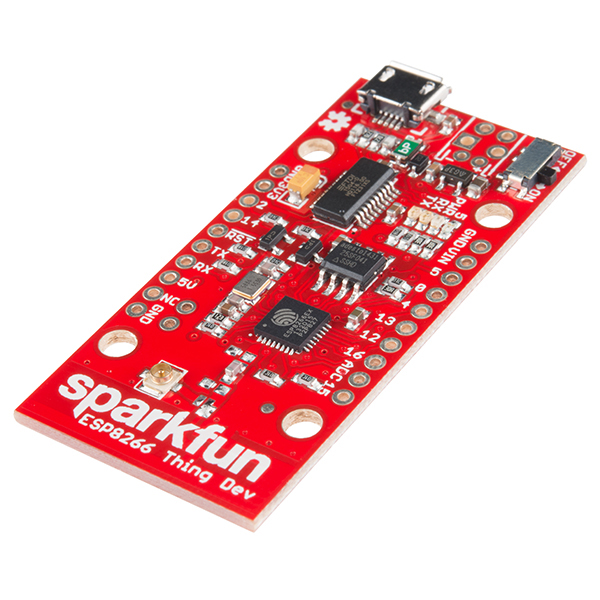If Necessity is the mother of Invention, Laziness is its father. Lowering the barriers to innovation certainly helps encourage the development of new solutions.
One technological feat that has been getting increasingly easier to do with embedded devices is send and receive data over the Internet. The recent development of the ultra-low-cost ESP8266 WiFi module has spurred a lot of interest in getting smaller devices connected to the ‘Net. The “Internet of Things” is essentially the idea that even small, single-purpose devices might be more useful when connected to the Internet.
Unfortunately, the original ESP8266 boards weren’t the friendliest things to prototype with. Their awkward two-row connector is mechanically stronger than an inline solution — but the geometry of most breadboards means that DIL parts with less than 300mil separation can’t be easily breadboarded. Plus, the ESP8266 uses an inexpensive but obscure Cadence Tensilica processor — not supported by most enthusiasts’ toolchains. Sure would be nice if someone were to bake an ESP8266 into an Arduino and write the libraries.
Seems like SparkFun had the same idea. Their “ESP8266 Thing” is essentially a high-powered Arduino-compatible CPU attached to a ESP8266 module. With the libraries and examples provided, it’s reasonably easy to get up and running with a webserver.

The SparkFun ESP8266 Thing Dev Board
After setting up the Thing (Note: you need to short GPIO0 to ground in order to get it to program), I modified a temperature and humidity webserver from Adafruit to create a webserver that could turn on an LED when the /on page was read, and turn it off when the /off page was read. It’s straightforward enough to modify this to, for example, control A/C outlets.
$16 to connect a gadget to the ‘Net, almost effortlessly. I love living in the future.

